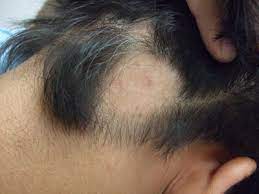Trichotillomania is a pathology in which the person who suffers compulsively pulls out their hair. Many times the person is not aware of this impulse or vice that leads to important lesions and pathologies in the scalp.
Behind hair loss, this vice or compulsion can hide, which gradually transforms a person’s appearance and can be counteracted with psychological assistance to treat the triggers that motivate this behavior. In addition, the capillary implant allows repopulating the areas affected by the mechanical removal to restore the aesthetic appearance of the person.
Definition of trichotillomania
It is a pathology based on repeated hair pulling that causes noticeable hair loss. Occasionally hair may be pulled out without noticeable hair loss and without any associated discomfort or pain.
This pathology can start with a simple habit of pulling the hair without consequences, but little by little it evolves to generate more important conditions as are usually seen in these people where the light spots on the scalp are striking.
Frequently the most affected areas are the head, eyebrows, eyelashes, beard and even pubic hair. Once the pathology becomes chronic, the person begins to pull out their hair from various areas, and may even pull out bunches of hair.
Trichotillomania can be associated with other harmful habits such as picking, biting nails, among others, and has the same prevalence in men and women. At first, there is an increase in tension or anxiety that is channeled with the pulling out of the hair that generates satisfaction. In addition, there is a significant number of people who are not aware of the tension and hair pulling.
Types of pullouts
Sudden start
It begins during childhood, before the age of 8, and can be corrected without intervention. It is important to pay attention to the evolution to prevent this habit from being maintained over time and throughout adulthood.
Automatic
It is characterized by being generated unconsciously and secondary when the person is focused on other activities such as studying, watching television, and reading, among others. According to specialist figures, this form affects 75% of people with trichotillomania.
Aware
In this variant, the person is fully aware of this harmful habit but feels an impulse that is impossible to stop, forcing them to continue pulling out their hair.
Complications
Beyond the aesthetic element, there can be health complications such as skin irritation, alopecia, scalp damage, infections, among other pathologies.
Treatment
A multifactorial treatment is carried out that addresses several disciplines. On the one hand, pharmacological and behavioral treatment will seek to definitively eradicate the harmful habit of hair pulling. On the other hand, hair treatment is based on hair grafting or conservative treatments in less serious cases.
Laser hair treatment: Is it effective?


